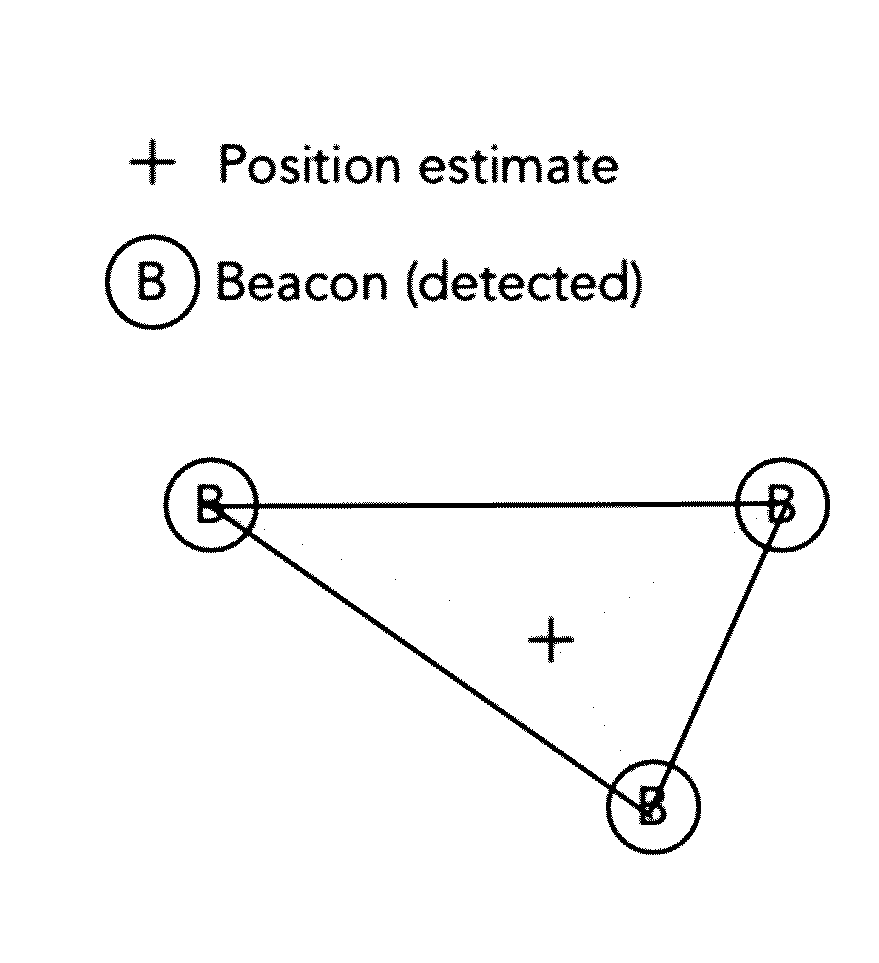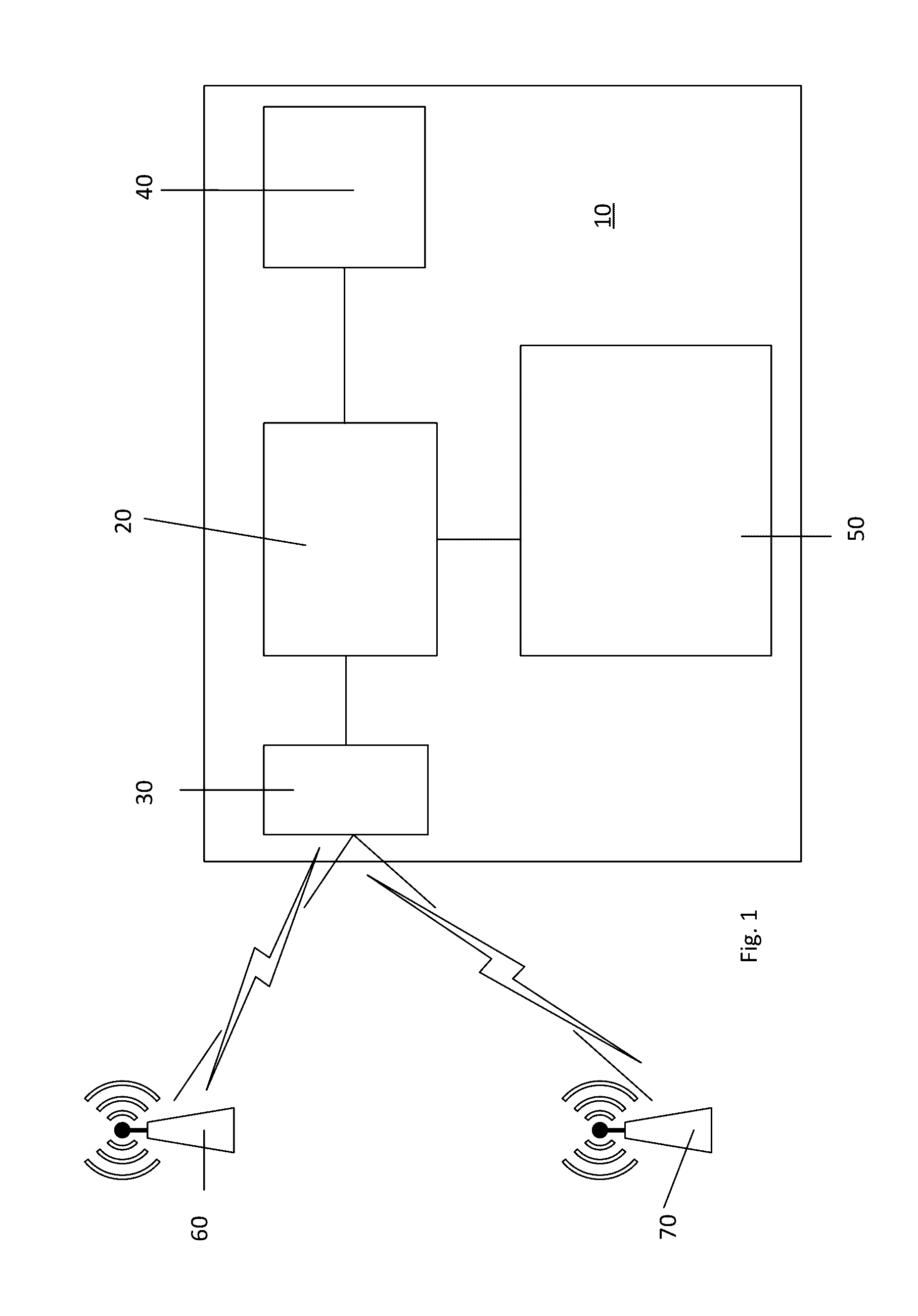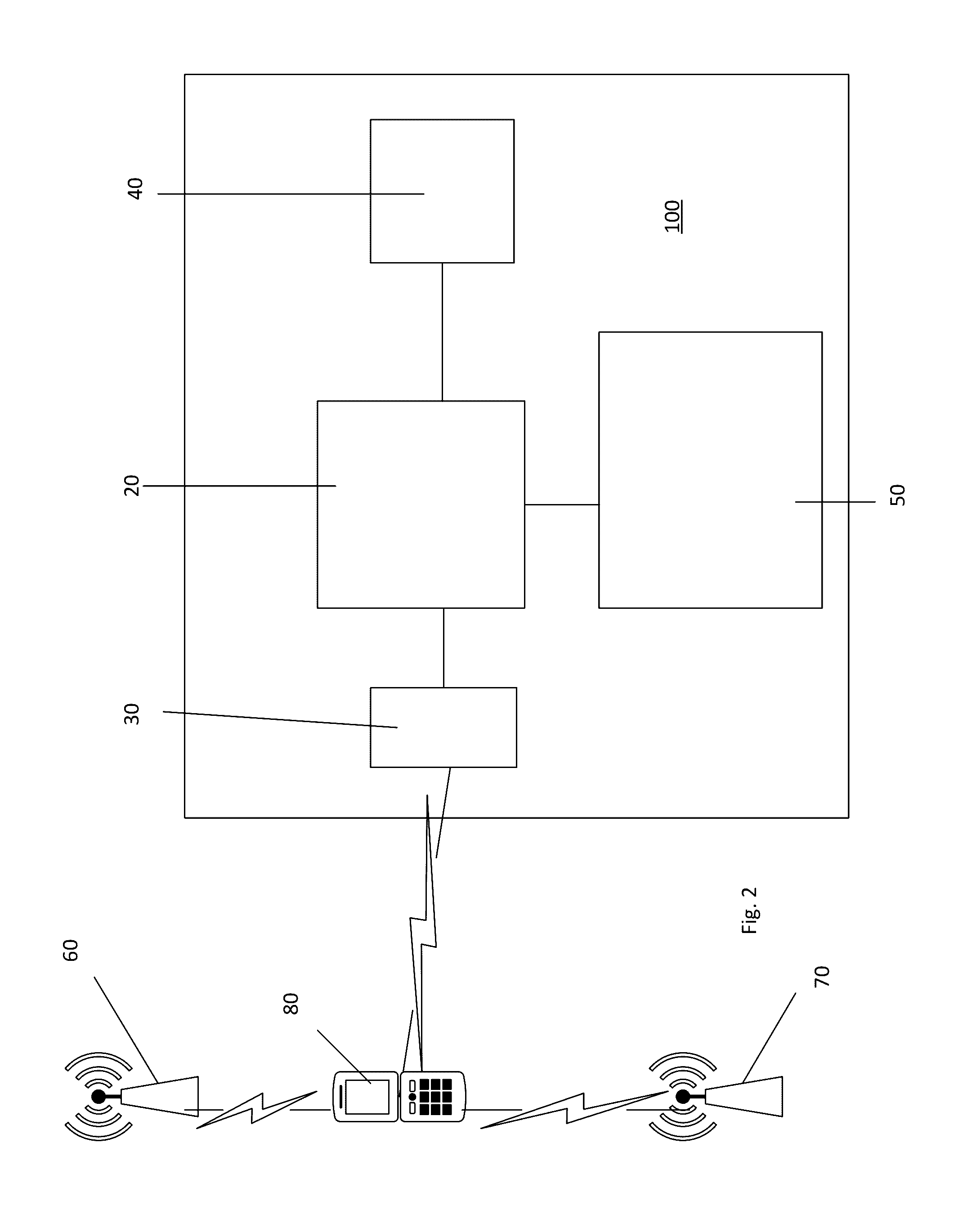Mobile device positioning system and method
- Summary
- Abstract
- Description
- Claims
- Application Information
AI Technical Summary
Benefits of technology
Problems solved by technology
Method used
Image
Examples
example operation
[0092]a. Mobile Device Listens to all BLE Signals in Vicinity
[0093]The receiver 30 listens to all BLE signals it can hear. Android and iOS SDK's provide native API's to achieve this via the BLE sensors in the smartphone.
[0094]b. Filter Signals Belonging to the System
[0095]BLE Beacons can be identified by their advertisement UUID. In addition, an encoded data structure is preferably used for beacon advertisement. Hence, BLE signals that either have a different UUID or have different / unrecognized data structure are filtered out.
[0096]c. Store Non-Filtered Signals in Memory
[0097]All heard signals are stored in memory of the mobile device 10 or system 100. This allows the system 10 / 100 to calculate how reliable a signal is (by looking at history of readings) and to use as much signal data as possible for position calculation, factoring in reliability score of each signal and applying smoothing filters as necessary. A time based approach may be applied to storage of non-filtered signals....
PUM
 Login to View More
Login to View More Abstract
Description
Claims
Application Information
 Login to View More
Login to View More - R&D
- Intellectual Property
- Life Sciences
- Materials
- Tech Scout
- Unparalleled Data Quality
- Higher Quality Content
- 60% Fewer Hallucinations
Browse by: Latest US Patents, China's latest patents, Technical Efficacy Thesaurus, Application Domain, Technology Topic, Popular Technical Reports.
© 2025 PatSnap. All rights reserved.Legal|Privacy policy|Modern Slavery Act Transparency Statement|Sitemap|About US| Contact US: help@patsnap.com



